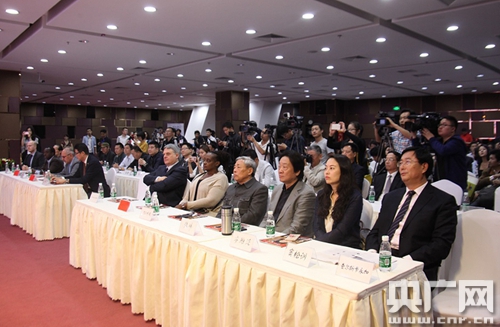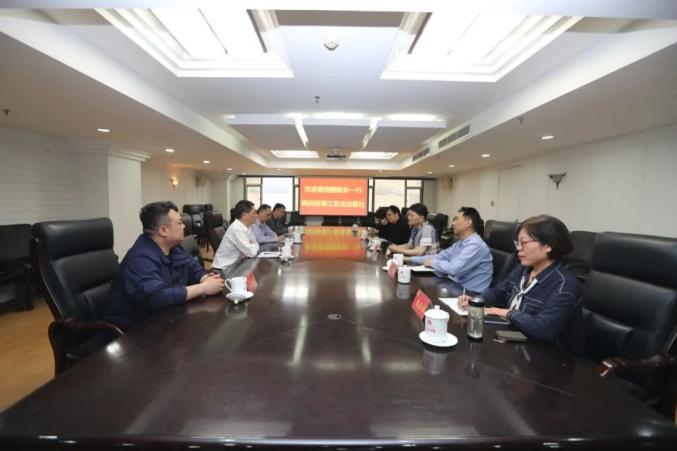Communications丨Dreams Come True At The End Of Eight Years - The Construction Of The Hungary-Serbia Railway Section Brings Chinese Solutions And Chinese Wisdom To Europe
Communications丨Dreams Come True At The End Of Eight Years - The Construction Of The Hungary-Serbia Railway Section Brings Chinese Solutions And Chinese Wisdom To Europe
Xinhua News Agency, Belgrade, October 8th | Dream come true after eight years - the construction of the Hungary-Serbia railway section brings Chinese solutions and Chinese wisdom to Europe
Newsletter | Dream come true at the end of eight years - the construction of the Hungary-Serbia railway section brings Chinese solutions and Chinese wisdom to Europe
Xinhua News Agency reporter Chen Yingshi Zhongyu
A long whistle blew, and the high-speed train pulled out of Belgrade Central Railway Station and headed straight for Subotica, a city on the border between Serbia and Hungary. The Serbian section of the Hungary-Serbia Railway was fully opened to traffic on the 3rd, and passenger trains began operating on the 8th. This "Steel Silk Road" carries the years of expectations of the Serbian people and embodies the eight years of hard work and wisdom of the railway builders of China and Serbia.
“We are here with responsibility and mission,” Qi Fengran, the project leader of the Hungary-Serbia Railway section, said with emotion as he looked back on the past 2,000 days and nights. Qi Fengran said frankly that how to effectively connect China's mature high-speed rail construction management experience with European standards and systems is one of the keys to the smooth advancement of the project. China has creatively established a multi-level meeting and coordination mechanism to smooth communication with the Serbian government, owners, supervisors and various partners, and help local cooperative enterprises grow together.
Serbian chief engineer Milan Banovic has been involved in the construction of the Se section project for more than 7 years. He said that during the project advancement process, familiarity with local regulations was a relatively big challenge. "After many meetings and communications, we finally successfully solved these problems."
According to Qi Fengran, the Hungary-Serbia railway adopts European technical standards, but in the formulation of technical plans for key projects, China’s railway construction wisdom and experience played a key role, and the Chinese plan was convinced by all parties.
Taking the Weilbast Bridge, the largest bridge in the entire section, as an example, the Chinese team proposed a Chinese plan to optimize the beam shape based on rich domestic practical experience. This optimized design can reduce the bridge span, shorten the construction period and save costs. However, it was not easy for Serbia, which initially adhered to European design concepts, to accept this plan.
Through repeated technical discussions, detailed demonstrations and even field verification, the Chinese team finally convinced the Serbian side with its excellent technical strength. "They finally expressed their conviction that China's solution is a better choice." Qi Fengran said, which enhanced the team's confidence in promoting the implementation of more Chinese wisdom.
Banovich said he was impressed by the construction of the Werbast Bridge, especially the use of steel produced in China. "I went to China to visit large steel plants and learn about related production technologies. All our engineers who have been to China are deeply impressed by China's production capacity and process level."
During the construction period, many Serbian officials, technical and management personnel also went to China for exchanges and personally witnessed the development achievements of China's high-speed rail. After inspecting the rails made in China, Serbian supervisors praised the high quality one after another.
The entire railway line is equipped with a complete set of communication signaling systems from China. This is the first time such a system has been introduced in Serbia, and engineers responsible for data processing are excited to learn new technologies for communication signals.
From the catenary suspension system and communication signal system in the Benoy section to the batch application of Chinese rails, switches, steel structures, etc. in the Nuosu section, Chinese elements have taken root on this railway step by step after successfully connecting with European standards, achieving "soft connectivity" from technology, equipment to standards.
"Many solutions come from China, and these new Chinese technologies have become part of our lives," Banovich said. "Every time we take a train on this railway, we can feel the excellence and reliability of Chinese new technologies."
At the end of April 2024, in order to achieve the goal of completing the project one year ahead of schedule, the project team set up two track-laying bases within the 108.1-kilometer range of the Nuosu section, organized two sets of large-scale track-laying and track-adjustment units, and carried out track-laying operations at the same time to shorten the construction period, and finally laid the track ahead of schedule.
Banovich said that China has introduced new track-laying technology and equipment, making important contributions to the on-time completion of the line and the high-quality construction of the superstructure.
Today, the Benoy section that was opened in advance has been operating safely for more than three years, with an average of more than 60 passenger trains running every day, and a maximum of 15,000 passengers in a single day, with a total of more than 12 million passengers, completely changing the way of commuting between Belgrade and Novi Sad. Many local people have achieved "twin-city life". "The Hungarian-Serbian railway is a 'transportation revolution'. I believe we will see it bring more changes to Serbia in the next few years." Banovic said.
After eight years of ups and downs, the dream came true by the Danube River. The Serbian section of the Hungary-Serbia railway is not only a faster and more efficient railway, but also an example of the successful integration of Chinese plans, Chinese wisdom and European standards. It is a vivid practice of the principle of joint consultation, joint construction and sharing of the "Belt and Road" initiative, and has written a new chapter in China-Serbia friendship and cooperation. (Chen Yingshi Zhongyu)





